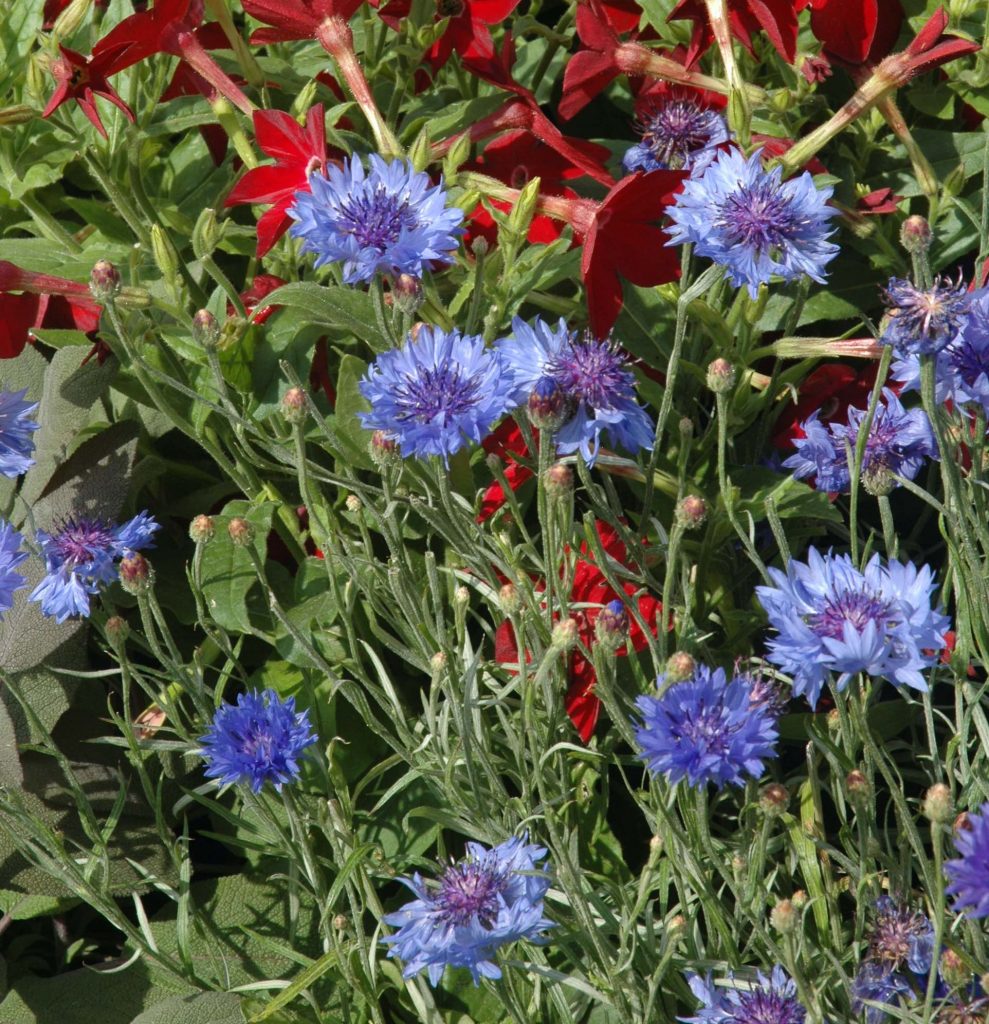
Continuing from last week’s post about buying seeds ready for sowing in spring, today I’m highlighting those cottage-garden favourites, the hardy annuals. These are flowers that bloom the same year as sowing and then die. But unlike the Half Hardy annuals discussed last week, these are hardy which means that they can withstand frost and they are usually sown where they are to bloom. They are perfect for filling gaps in the border and are an inexpensive way to fill a garden with flowers.
An additional benefit is that most of them are perfect for pollinators so will attract bees and butterflies to the garden. Because they are hardy and easy to grow, many of them will self seed and so will pop up again the following year. We usually sow them in spring, from March to May, but they will shed seeds and these often germinate in September and the young plants survive winter and will bloom earlier the following summer. Some of these annuals will never have to be bought twice because they self seed. But you often find that the colour range, if you sow a mixture, changes over time because some colours are dominant.
The best way to sow them is to fork over the soil, rake it so it is fine and then sow them in rows that are about 25cm apart. That way you can weed among them – the plants will be in rows, unlike the weeds. As they grow they will fill in and you won’t see the rows. It is also best to thin the seedlings as they grow so they are not too crowded, but that is a post for another day.
If your soil is clay, like mine, it can be difficult to break down the soil fine enough for sowing in spring. So I sow these in cell trays and plant them out. I sow four or five seeds per cell and thin them to three seedlings to grow on. Many of these plants hate root disturbance so this is better than sowing and transplanting like we do with Half Hardy annuals. You don’t need a lot of heat and you can sow in April outside if you cover the seed trays with fleece.
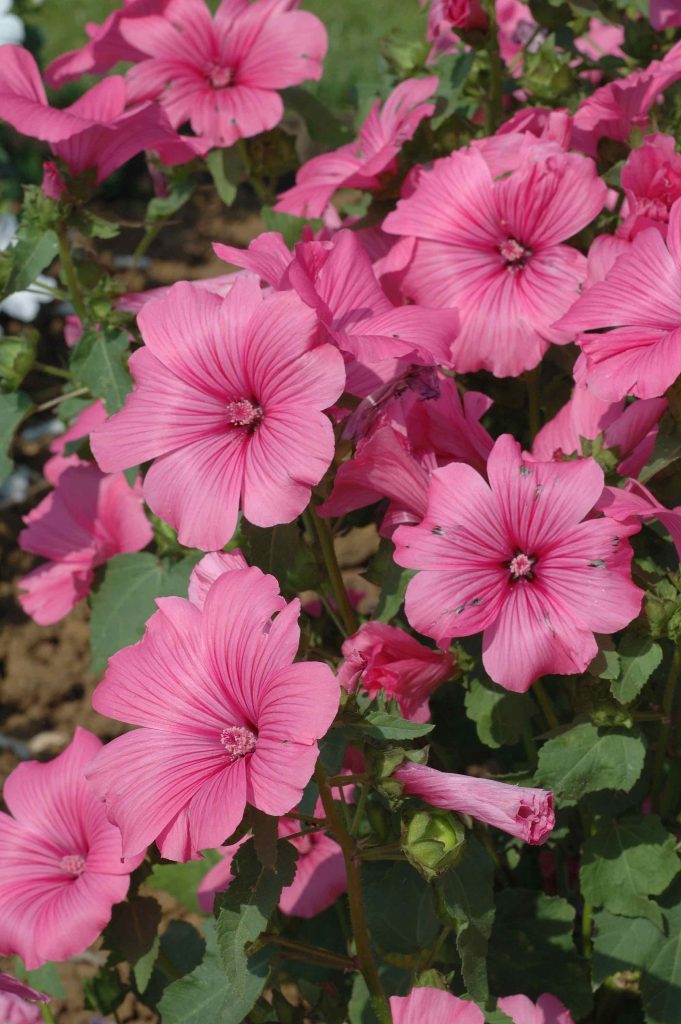
Lavatera
Big, bold and beautiful, lavatera, in pink or white are easy and satisfying. The large seeds are easy to handle and to space when you sow them and the seedlings, with their round leaves, are easy to identify. Plants rapidly make columns of foliage and most grow 60-90cm high, depending on variety. They do have to become quite large before they start to bloom but once they do they will be covered in flowers for months. Last summer my ‘Dwarf Pink Blush’ – actually 70cm high – was covered in pale pink flowers from July till November and put most other flowers in the shade. A good one for kids to grow just because it is so spectacular.
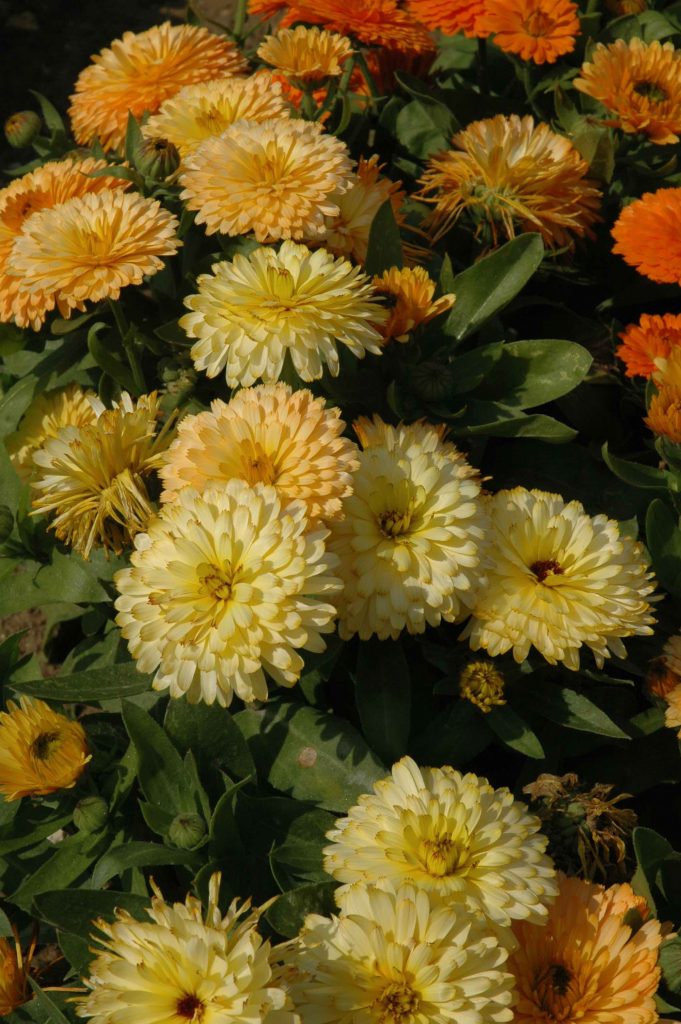
Calendula
This is another one that is good for children to try. The strange seeds look a bit like maggots or caterpillars and the plants are quick to grow. The flowers, on taller kinds, are reasonable cut flowers and the petals of all are edible so you can add them to salads. Kind to skin too, you can pop the flowers in the bath to colour and fragrance the water and do you good (till you have to clean the bath). Even better, the flowers attract bees and hoverflies to help mop up any greenfly in the garden. This is one that will definitely revert to the plain orange over the years but I have never seen an ugly calendula. By the way, the name means ‘all year’ because it is quite normal for the odd plant to bloom in winter. In fact I can see some in bloom in the garden as I sit here writing. I would not consider a garden complete without calendula and I even like the rather pungent smell of the foliage.

Cornflower
Everyone loves cornflowers – I bet you have a plate, mug or place mat with cornflowers on it! The typical blue cornflower is native and tall, willowy and elegant. Ignoring a few dwarf kinds that I am not keen on, the range of colours includes red, white, pink and beetroot red (which most people call black). ‘Polka Dot’ is a good mixture but I like ‘Classic Fantastic’, which is a mix of blue and white and ‘Classic Romantic’ which is all pink and blush.
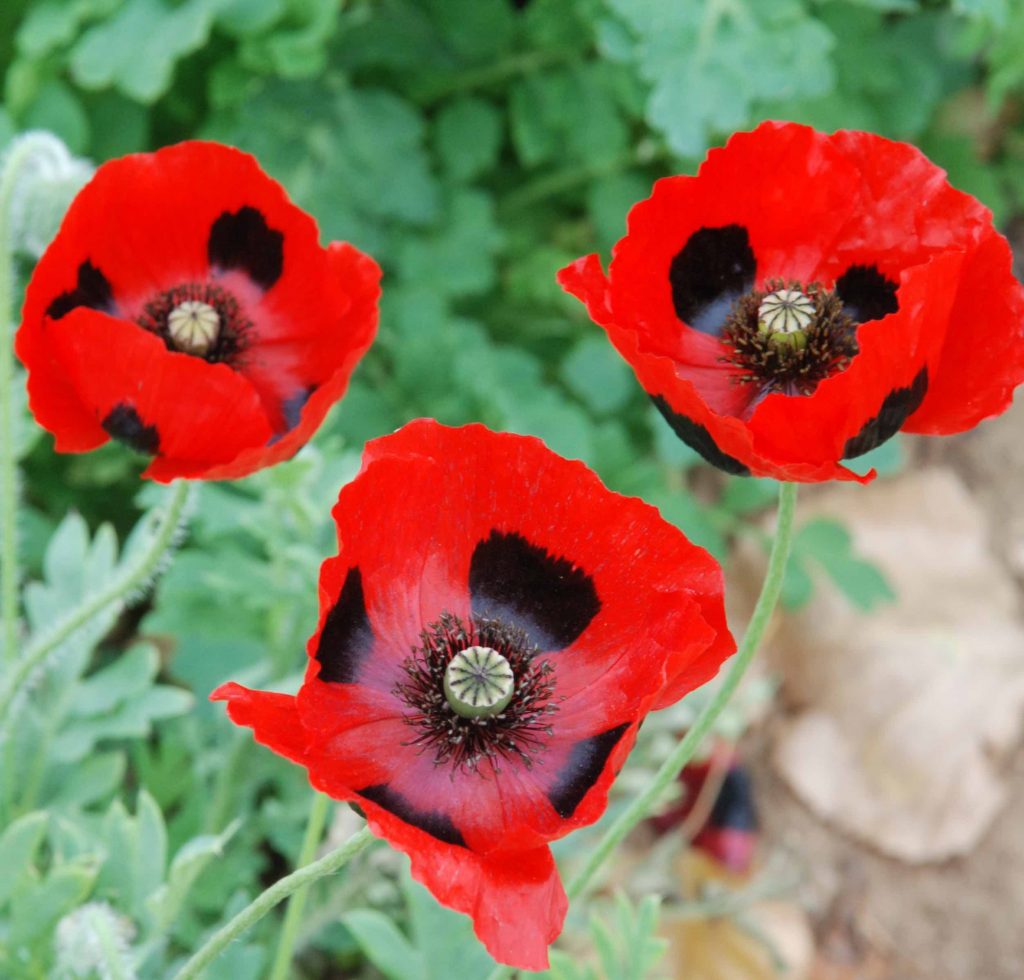
Poppies
There are a lot of different poppies but only three need concern us here. For the classic, red, blotched poppy choose the ladybird poppy – (Papaver commutatum) – above – which is sometimes just called the ladybird poppy! It is easy to grow though the seeds are very small, in common with all poppies. Sowing evenly can be tricky and the plants will need careful thinning out.
The native field poppy (Papaver rhoeas), with red flowers, is usually found in the wild flower range on the seed stand but its descendants, which include the famous Shirley poppies – bred in Shirley, down the road near Croydon – offer a range of colours and many doubles.
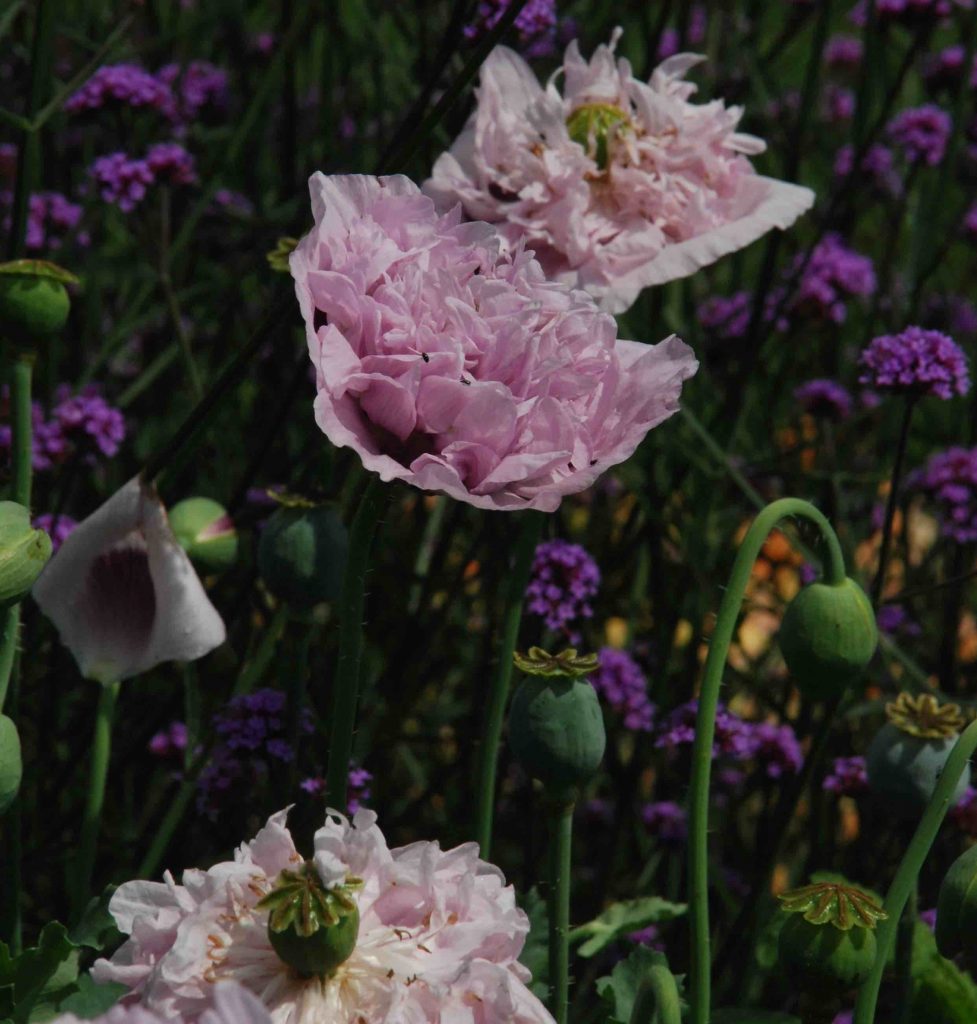
Finally there are the opium poppies (Papaver somniferum) – above – which are rather coarse plants with large grey leaves. They do not flower for long but they make up for this with huge blooms, often double or frilly, and large seedheads which are good for drying for winter vases.
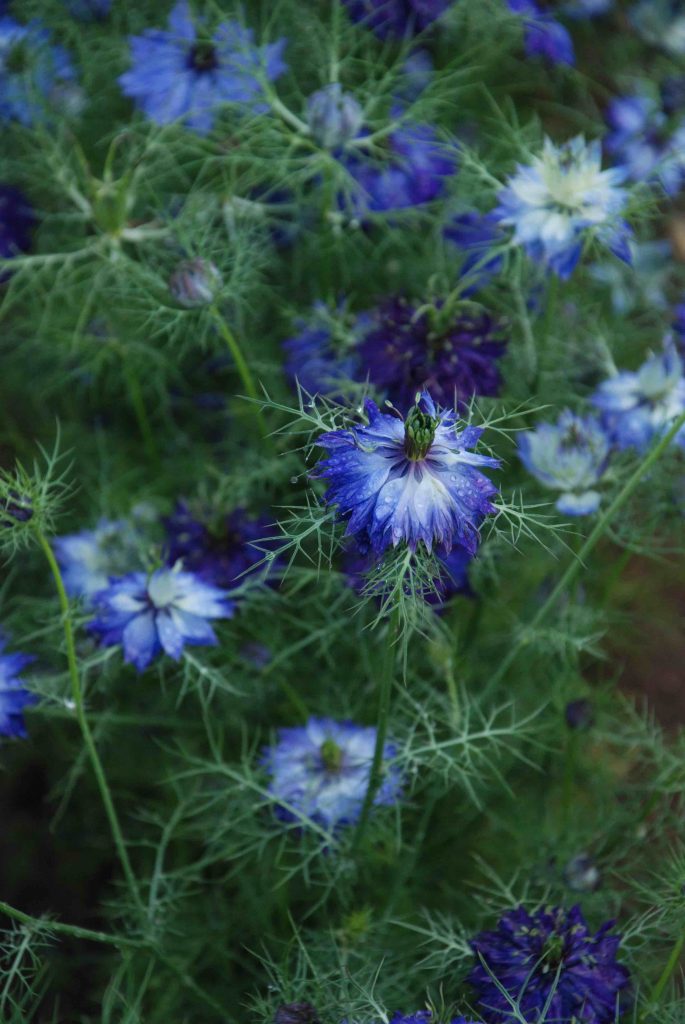
Love-in-a-mist (Nigella)
This is one of my favourite annuals and is pretty as soon as it starts growing with its feathery leaves. The flowers are showy and as well as the usual blue there are mixes that include pink and white as well as many ‘in between’ shades. Even when the flowers drop the plants are attractive because of the large, inflated seed pods that are topped with long, curved horns, which is probably how it gets its other common name of ‘devil in a bush’.
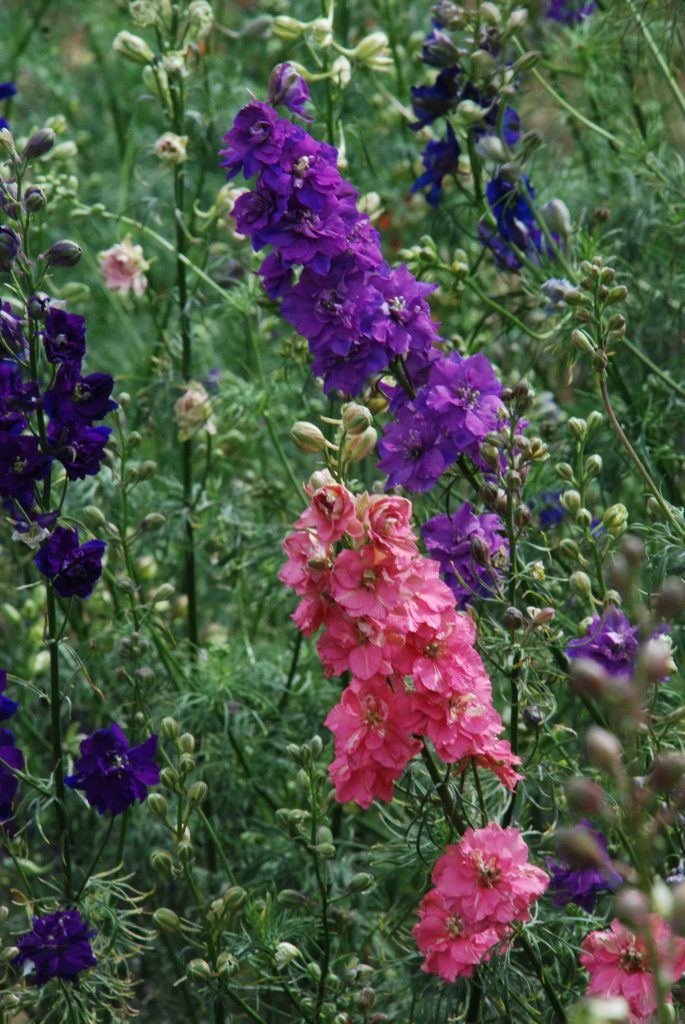
Larkspur
Poor larkspur is rarely grown, but you will be able to get seeds, though it is grown by the acre as cut flower and for drying as ‘eco’ confetti. It is basically an annual delphinium and the tall stems make it a good cut flower. The colour range includes every shade of blue, white and pink and there are some lovely bicolors too. It is easy and simple to grow but it may need some support to keep the tall stems upright and straight for cutting.
All these are available at Nags Hall now. It is worth buying your seeds early so all the new and good varieties don’t sell out. But remember where you put them, ready for sowing!